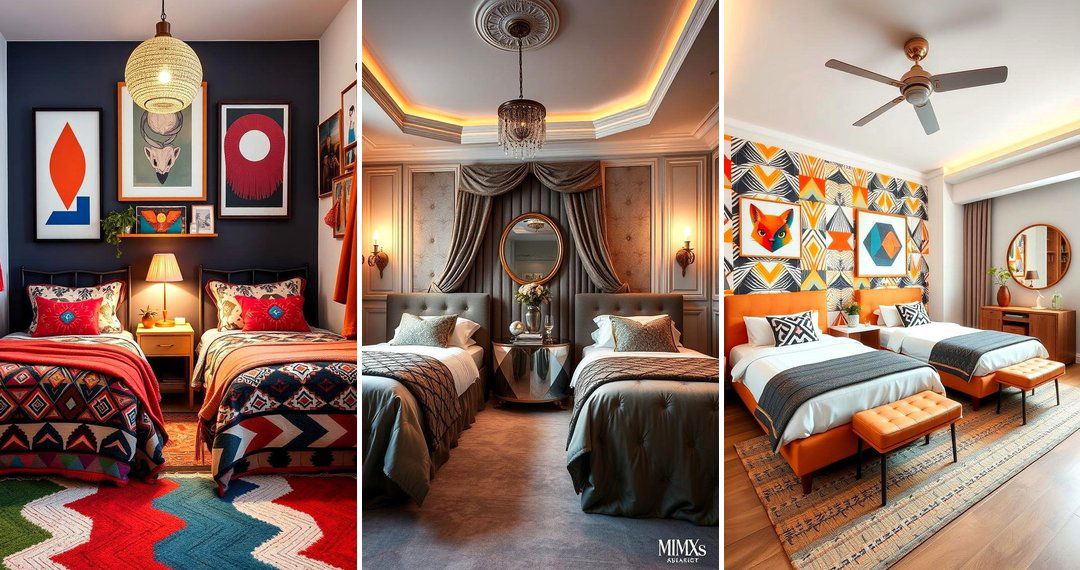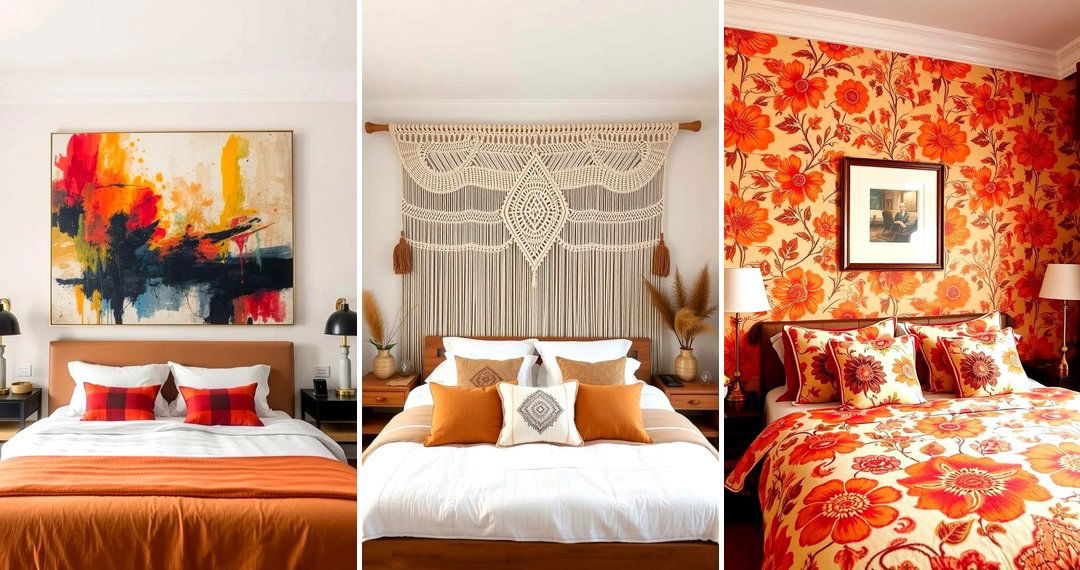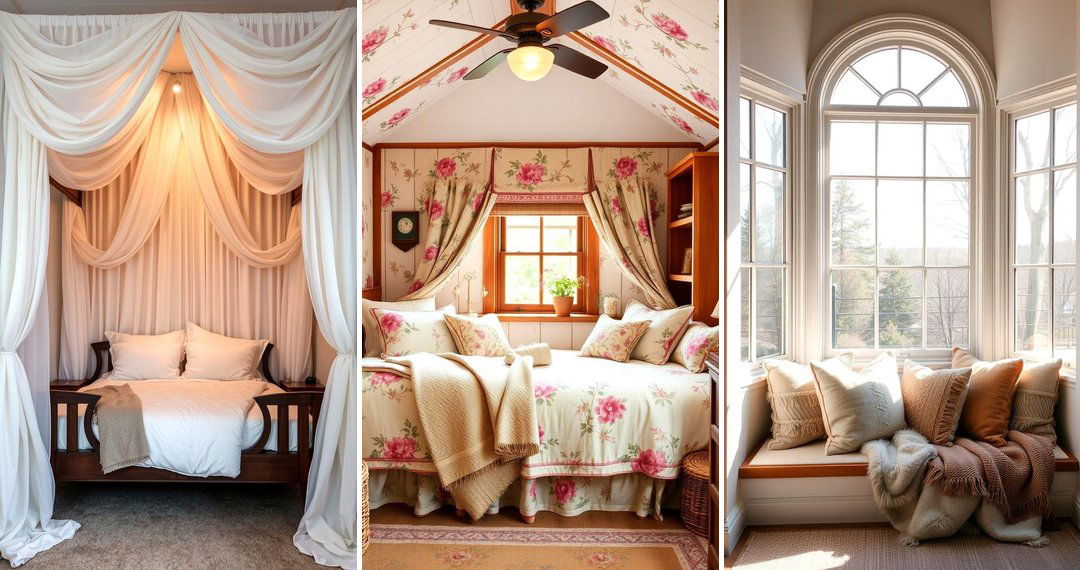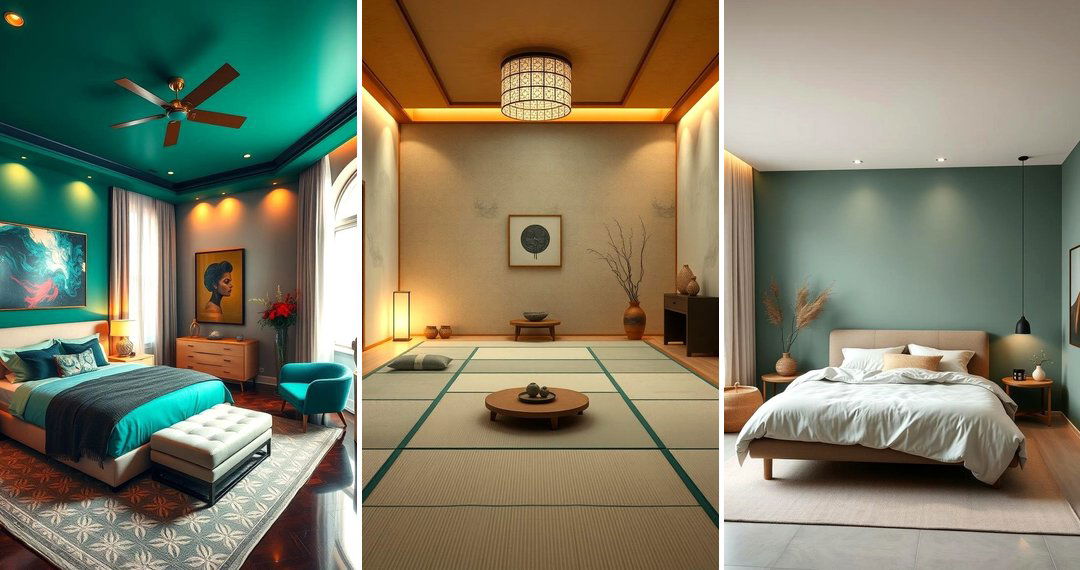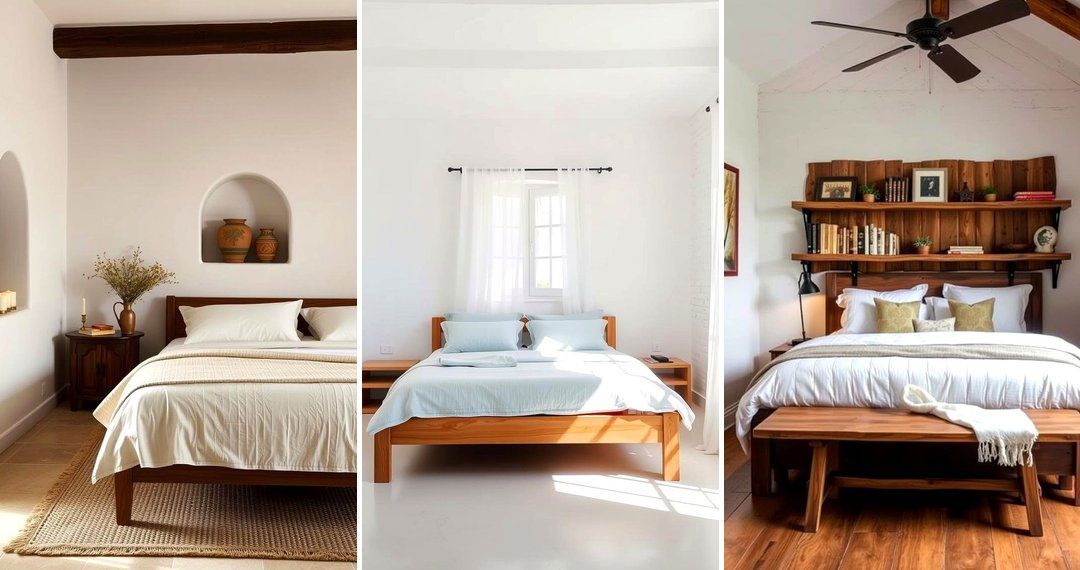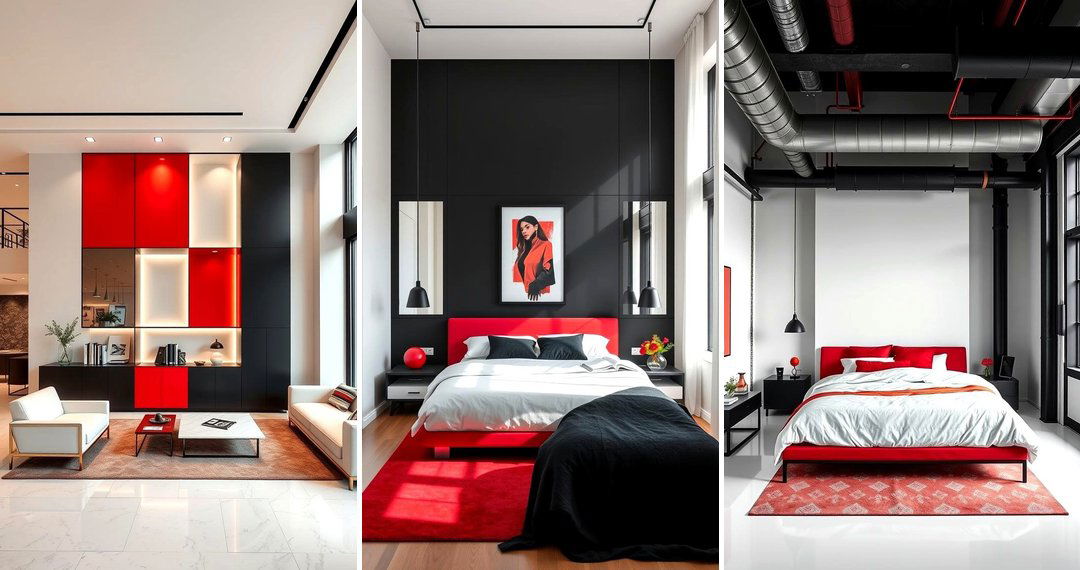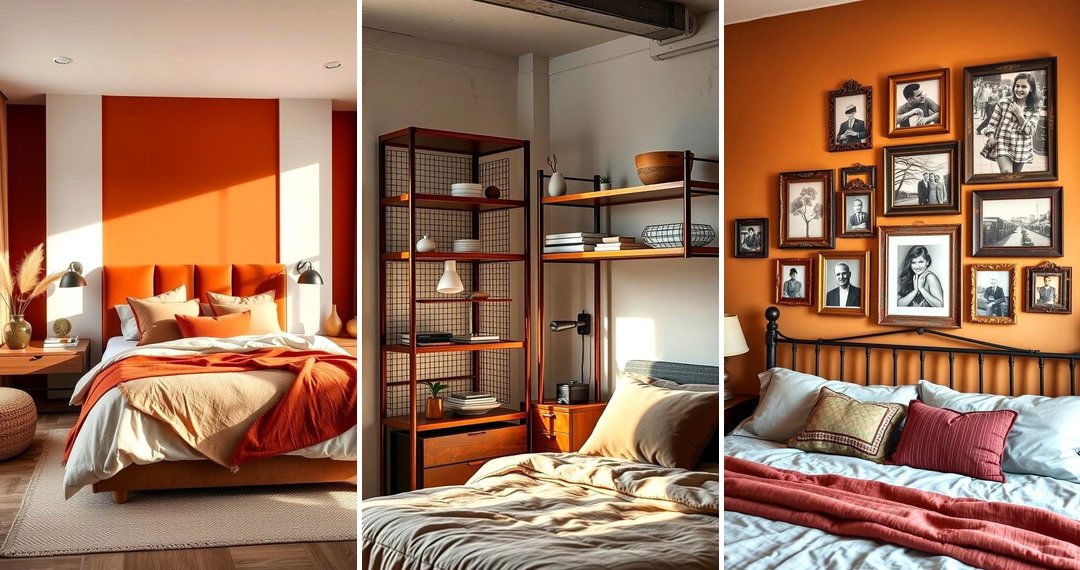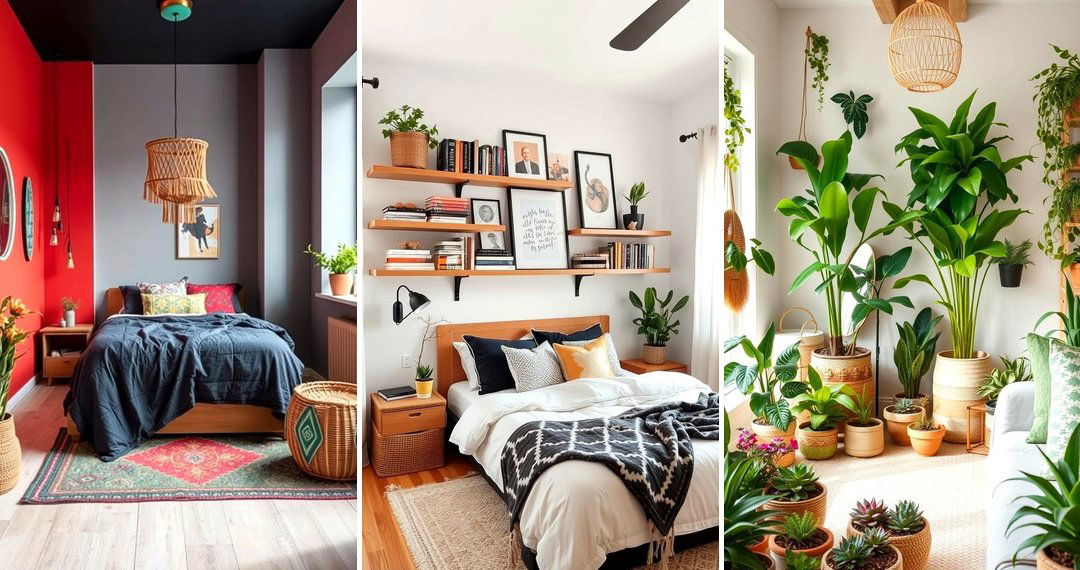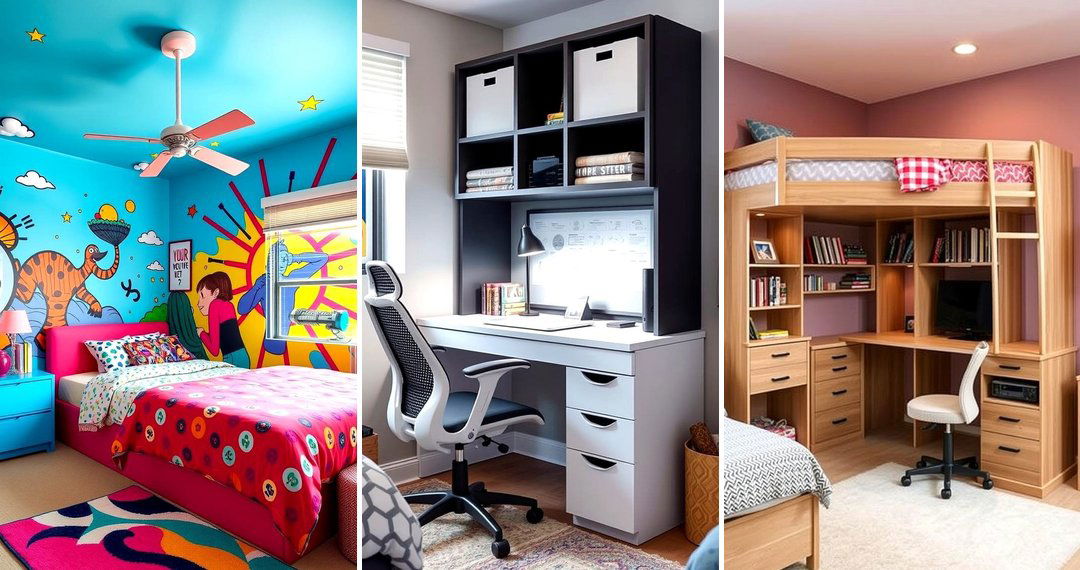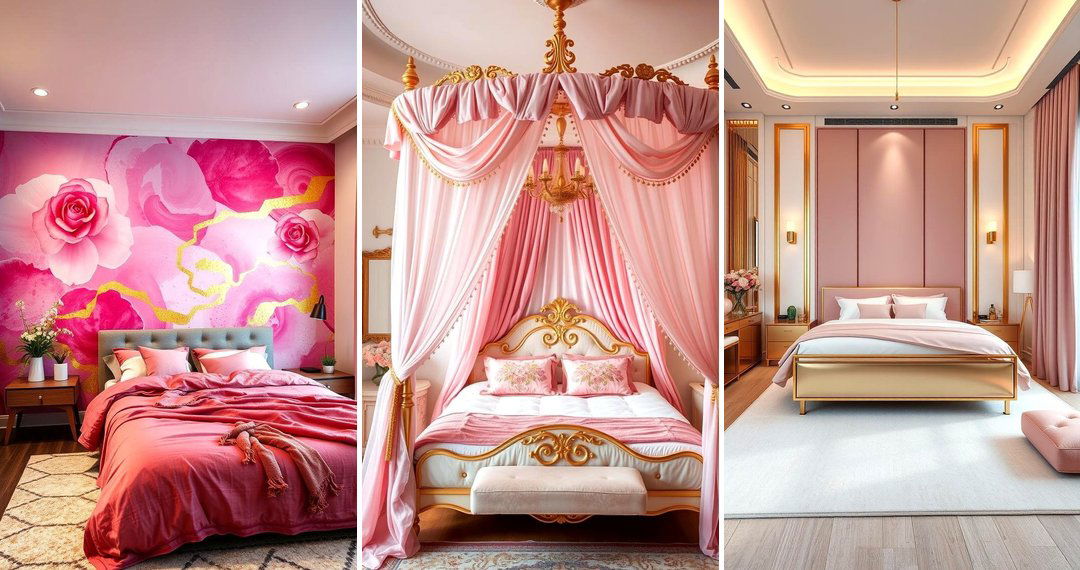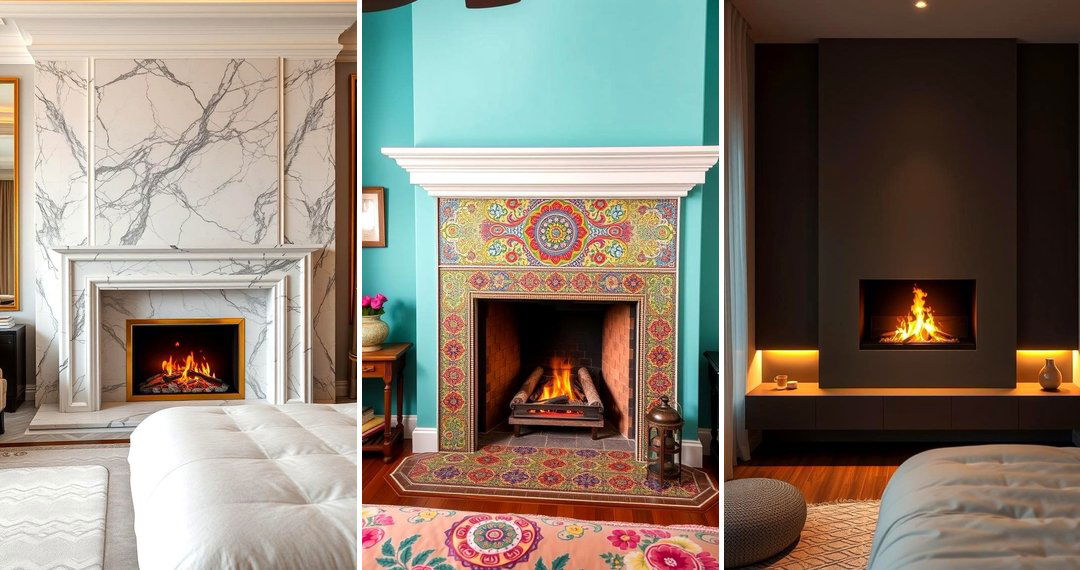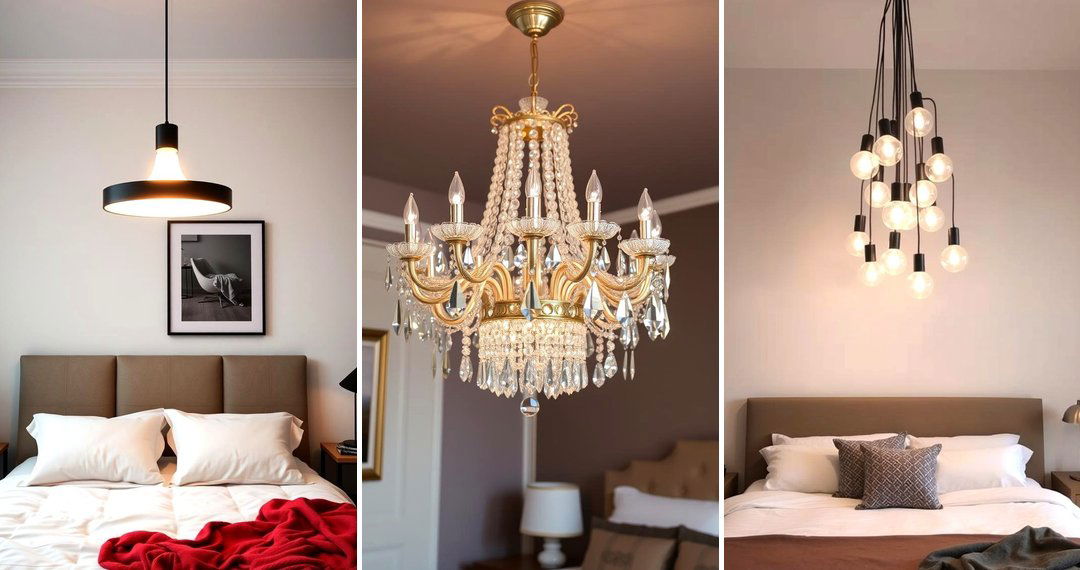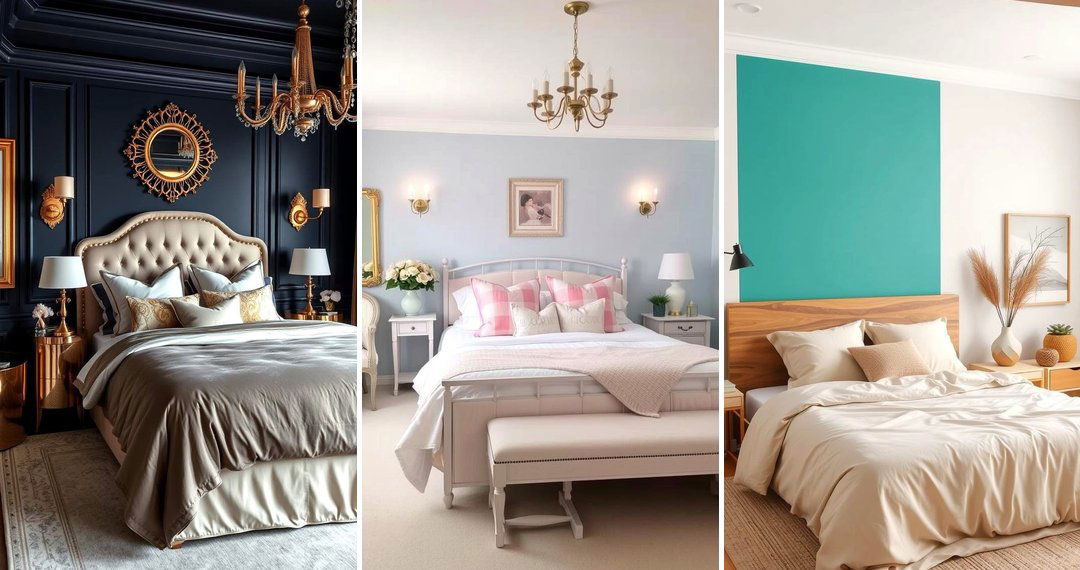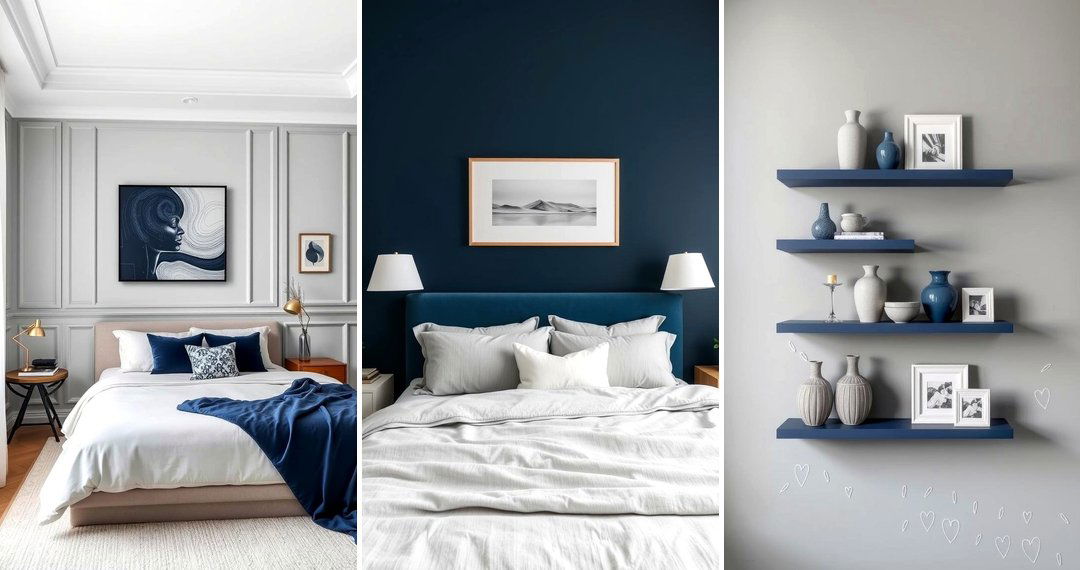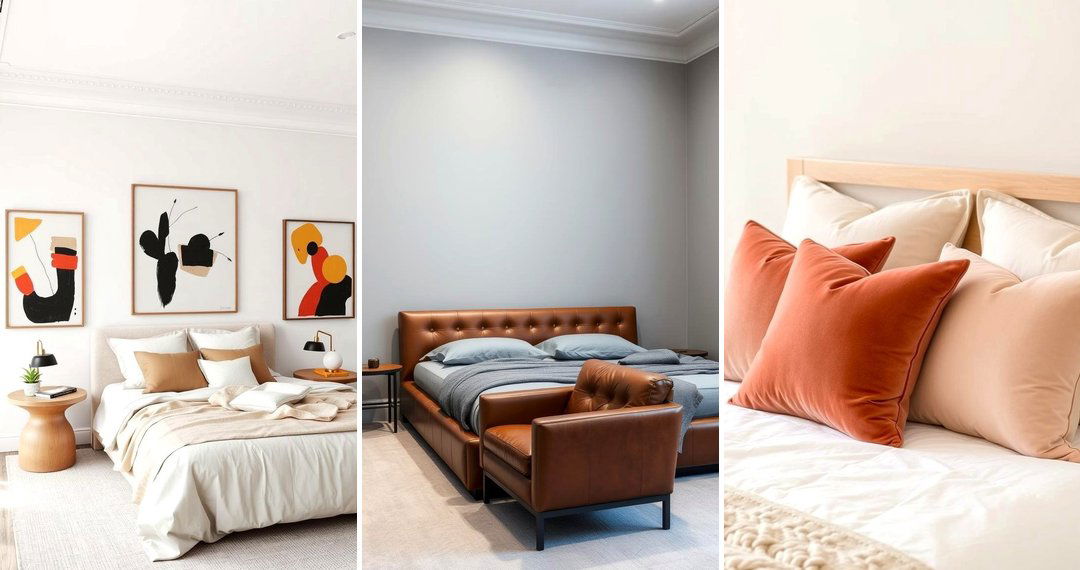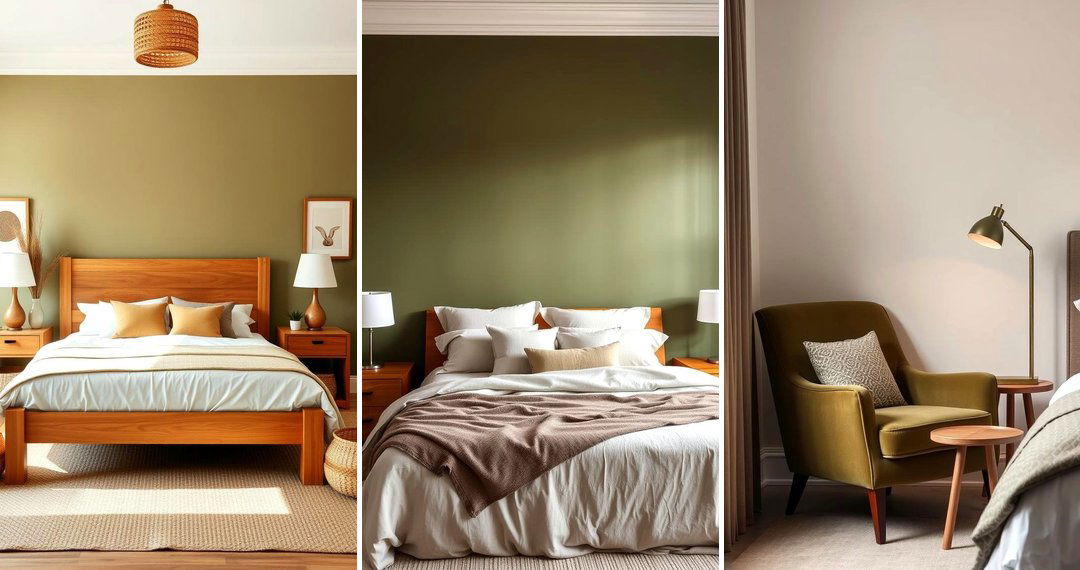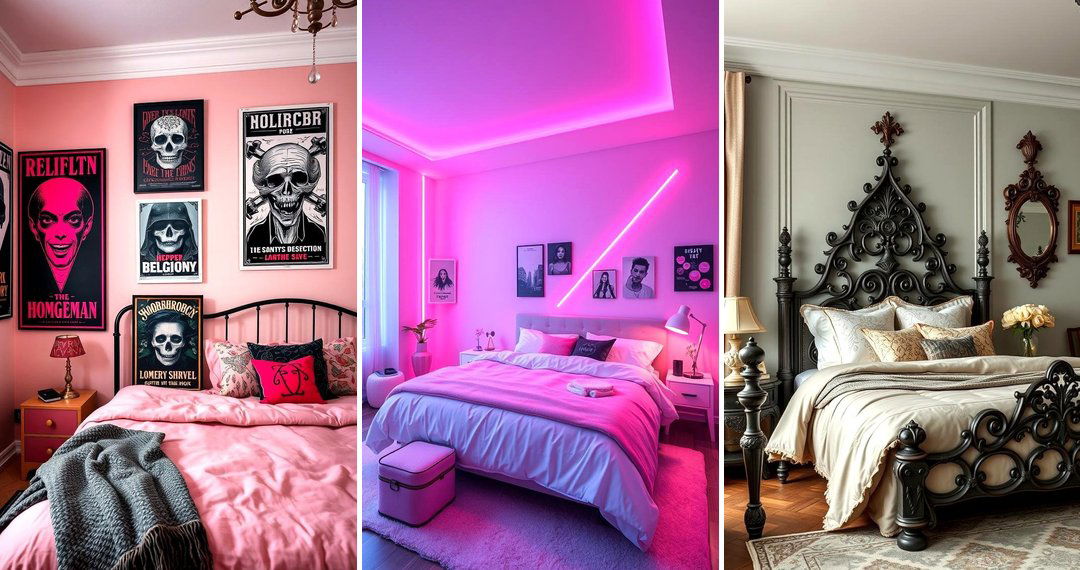For those navigating the delightful challenge of creating a harmonious shared bedroom in a compact space, the possibilities are more inspiring than you might think. It's about clever design, smart storage, and a touch of creativity to ensure both occupants feel comfortable and have their own sense of personal space. Discover how to transform a small shared room into a functional and stylish haven with these innovative ideas. Let's explore some fantastic ways to maximize every inch and create a shared space that truly works for everyone involved.
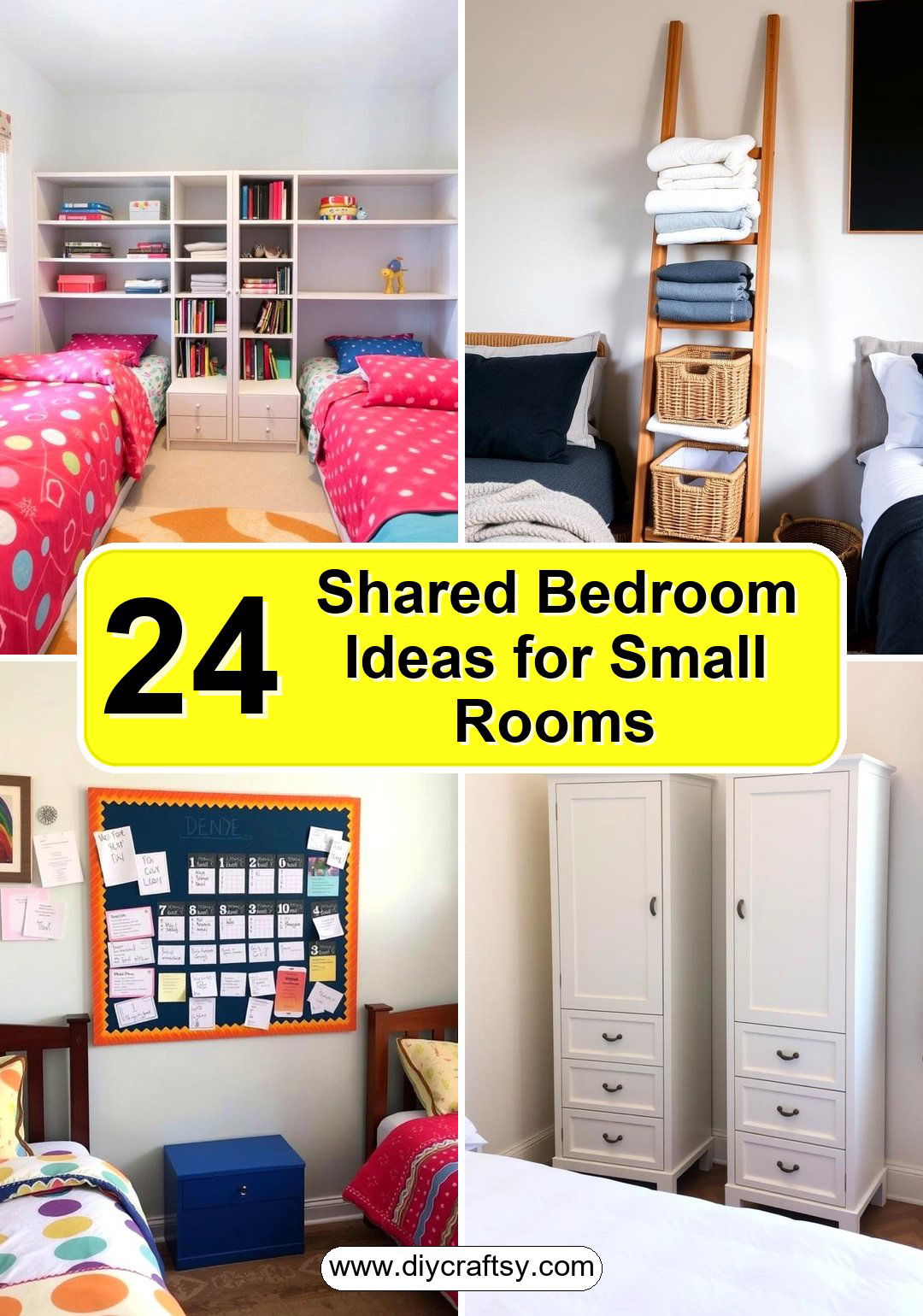
1. Bunk Beds with Built-In Storage
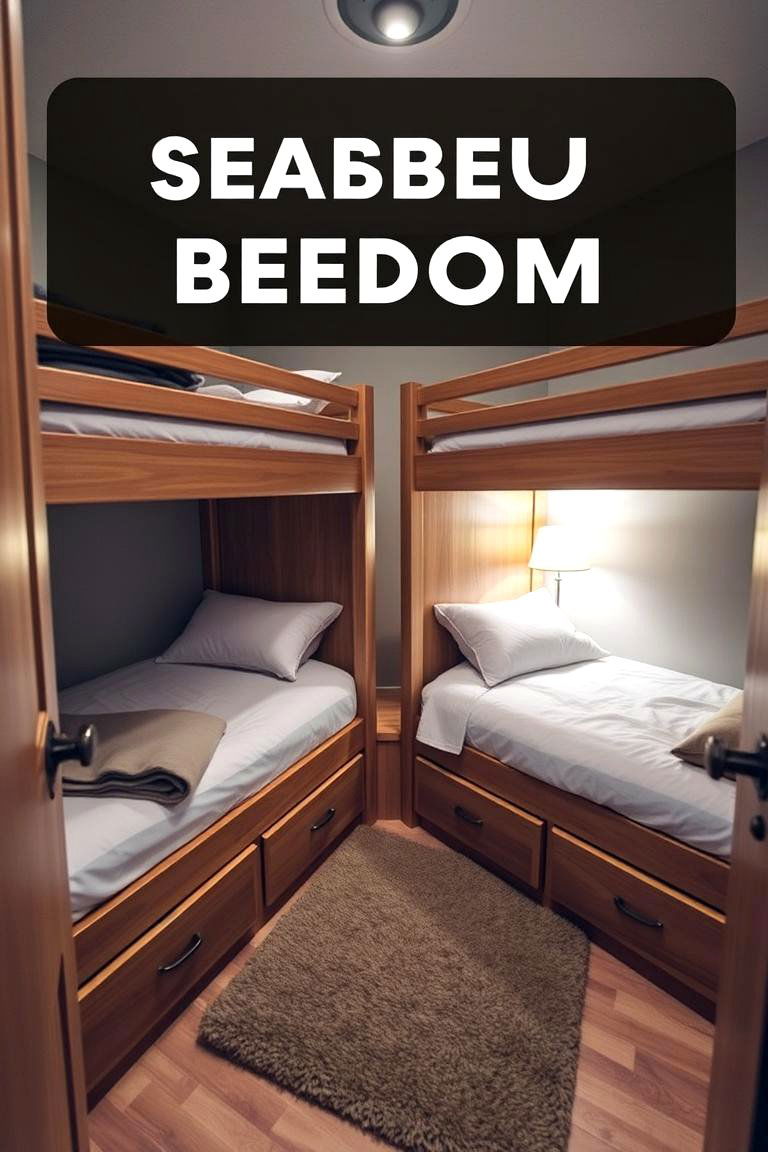
Consider the classic space-saver: bunk beds. These aren't just for kids anymore. Modern designs incorporate built-in drawers underneath, shelving on the sides, and even individual reading lights and charging stations. This maximizes vertical space while providing essential storage for each person, keeping the floor area clear and making the room feel more spacious. The integrated storage units help to declutter the room, promoting a sense of order and calm in a shared environment.
2. Loft Beds with Desk Space Below
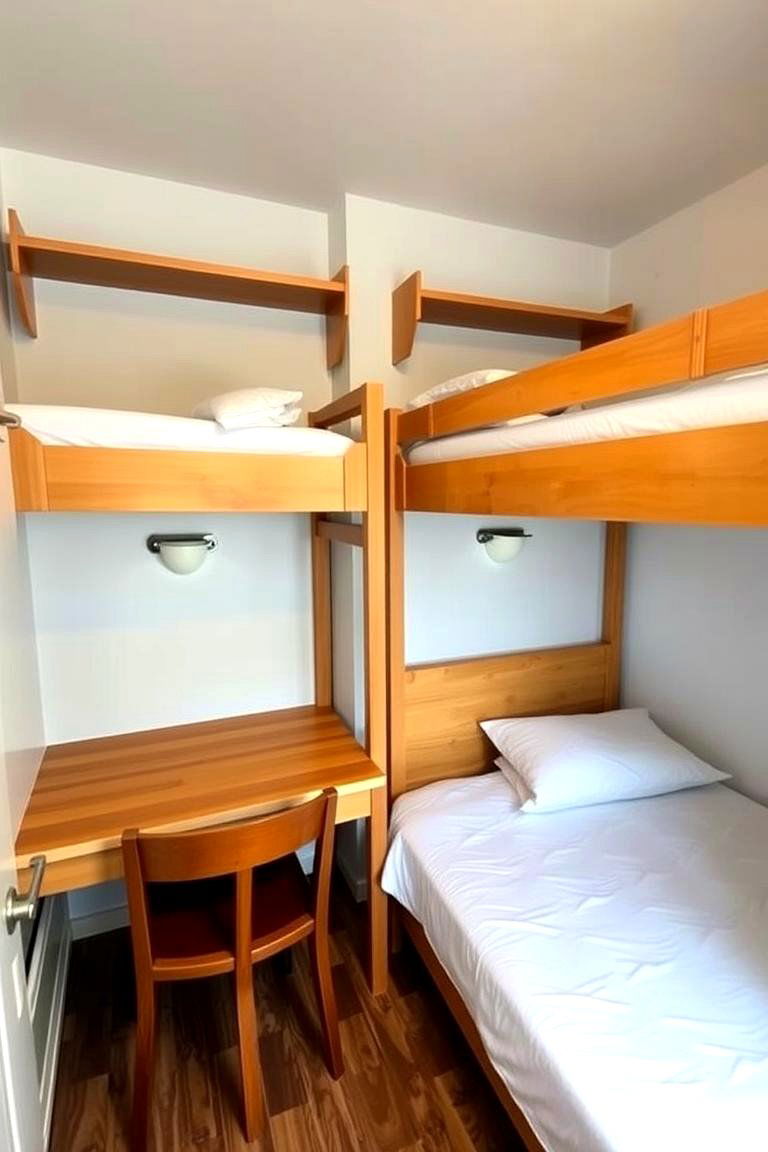
Another fantastic way to utilize vertical space is with loft beds. These elevate the sleeping area, freeing up the floor space beneath for other essential furniture. For a shared room, placing desks or study areas under each loft bed creates individual zones for homework or creative pursuits. This arrangement provides a sense of privacy and personal space even within the same room, which is crucial for focus and comfort.
3. Trundle Beds for Occasional Sharing
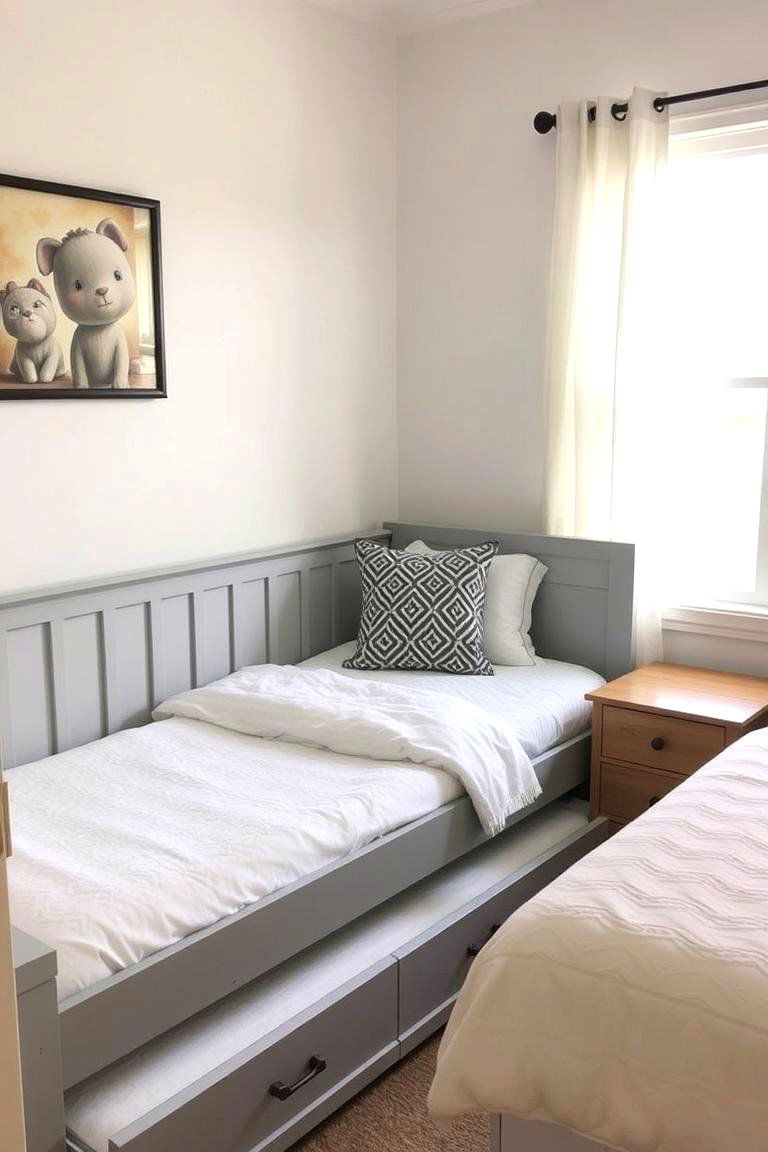
What if the shared room is only occasionally occupied? Trundle beds are an excellent solution. One bed frame slides neatly under the other, only to be pulled out when needed. This setup keeps the room feeling spacious most of the time and offers a comfortable sleeping arrangement when guests or siblings share the space. This flexibility makes trundle beds ideal for guest rooms or children's rooms where sharing is not a permanent arrangement.
4. Cleverly Placed Dividers
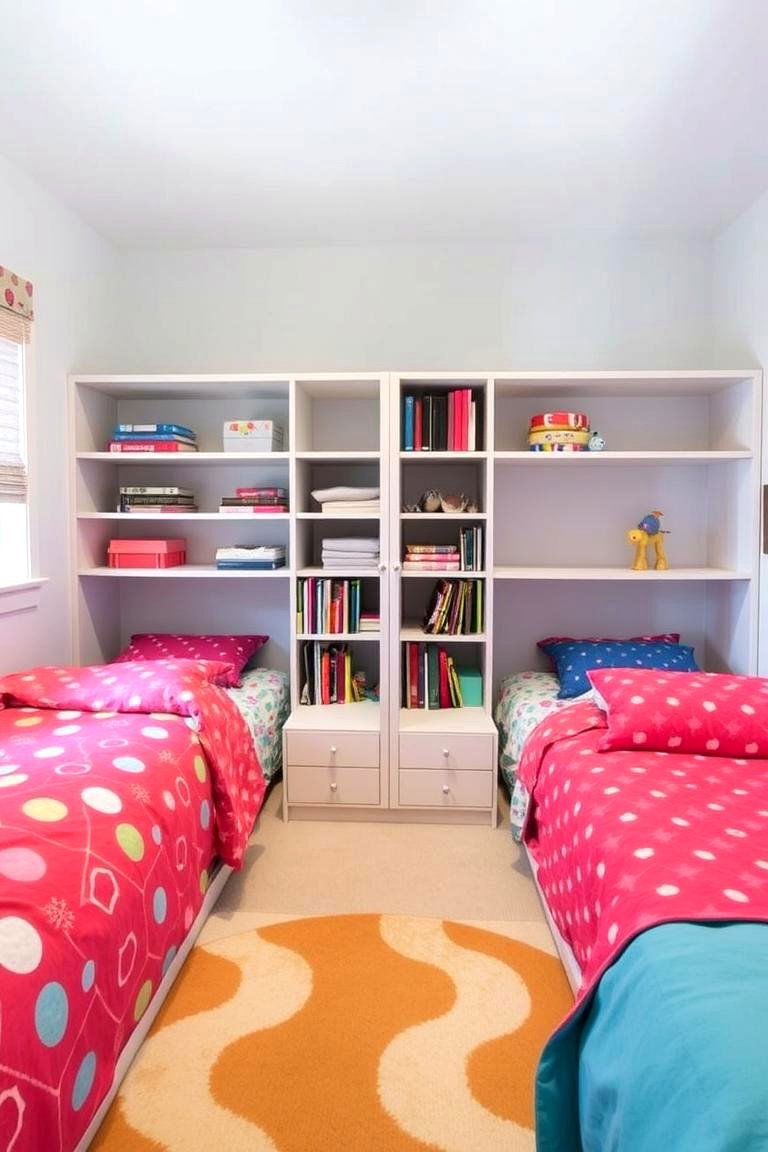
Bringing a sense of personal space to a shared room can be achieved through strategically placed dividers. These can be bookshelves, curtains, or even freestanding screens. By creating visual separation, each occupant gets a feeling of their own zone without completely closing off the room. This offers a balance between togetherness and privacy, promoting harmony in the shared environment.
5. Mirrored Wardrobe Doors
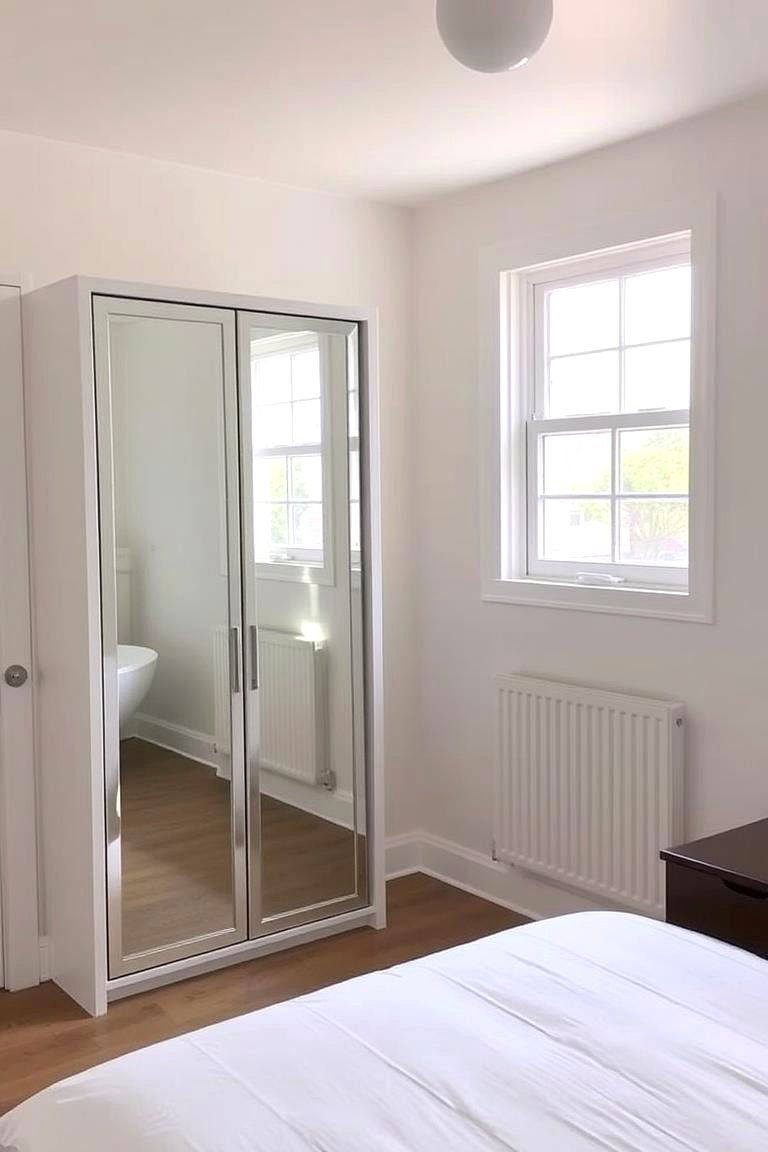
Looking for ways to visually expand a small room? Mirrored wardrobe doors are a brilliant trick. They reflect light and create the illusion of more space, making the room feel brighter and larger than it actually is. Additionally, they serve a practical purpose, eliminating the need for a separate full-length mirror, saving valuable floor or wall space.
6. Wall-Mounted Shelving Units
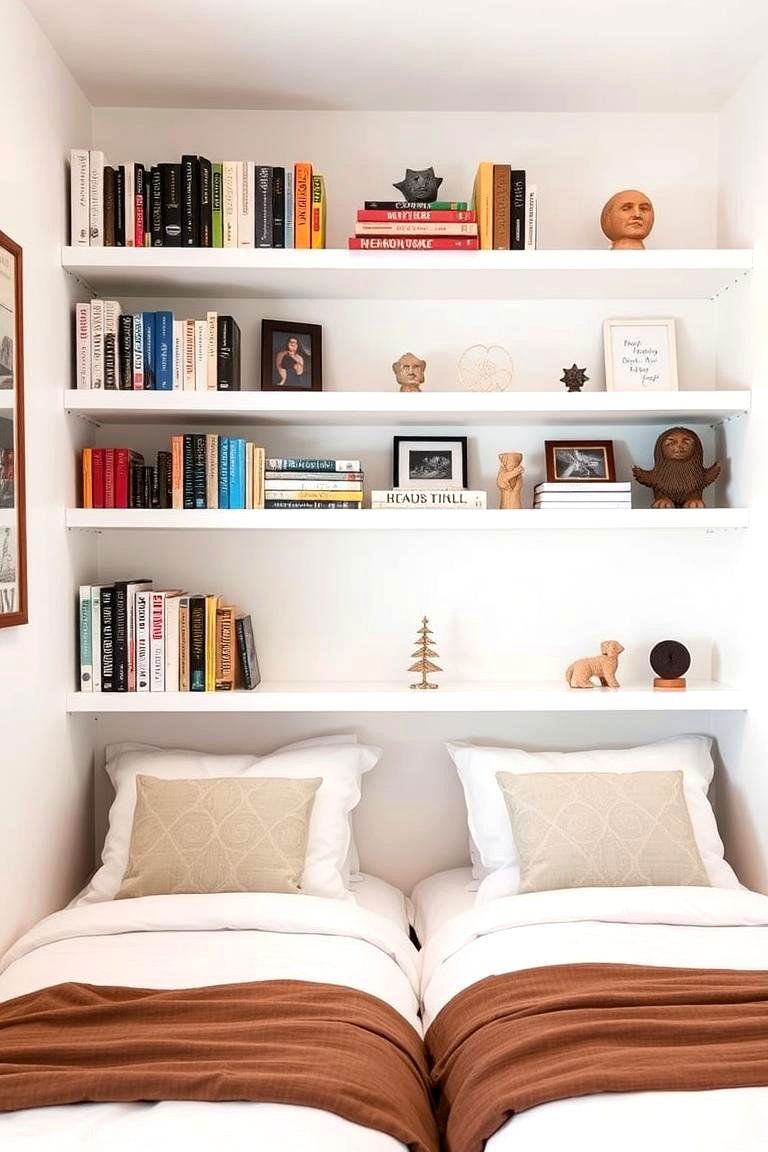
Take advantage of vertical space with wall-mounted shelving units. These are perfect for storing books, decorative items, and personal belongings without taking up precious floor area. Install individual shelves for each occupant to keep their items organized and easily accessible. This not only maximizes storage but also adds a personalized touch to each person's designated area.
7. Under-Bed Storage Drawers

Consider maximizing the space under the beds. Storage drawers that slide underneath are ideal for keeping extra bedding, out-of-season clothing, or even toys neatly tucked away. This keeps clutter at bay and makes it easier to maintain an organized and tidy shared bedroom, contributing to a more peaceful atmosphere.
8. Fold-Down or Murphy Beds
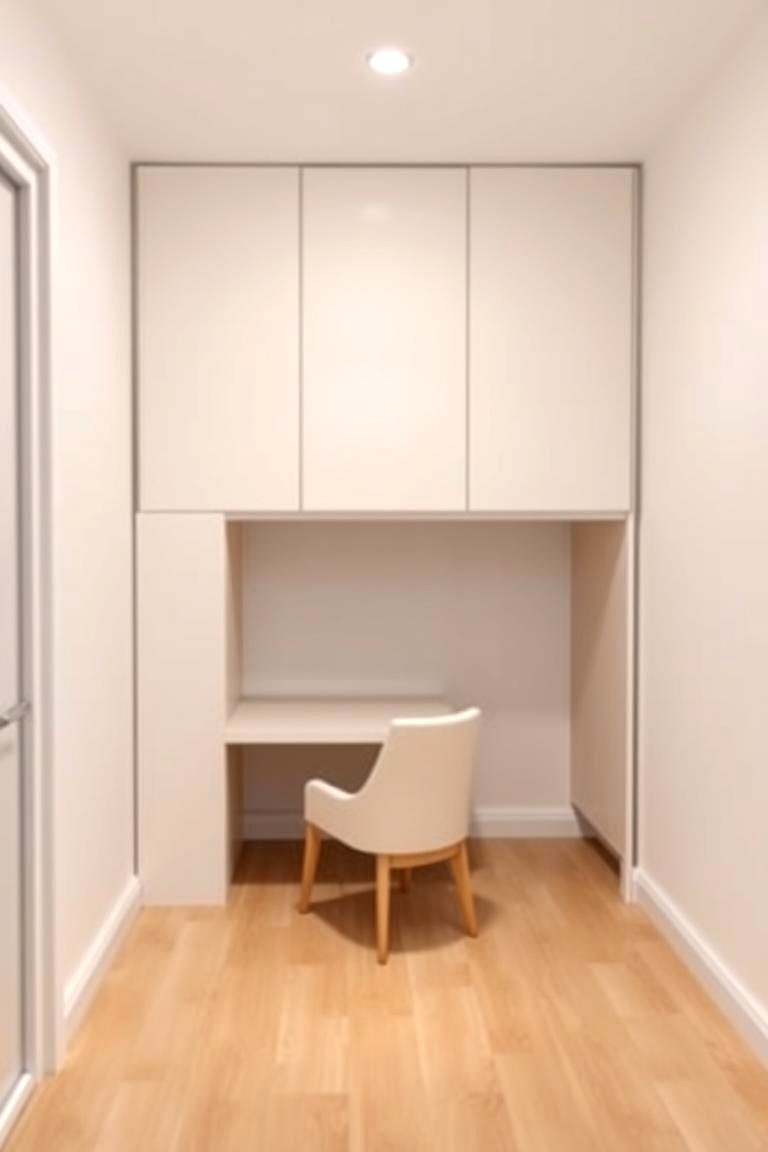
For truly tight spaces, fold-down or Murphy beds can be a game-changer. These beds can be folded away into the wall when not in use, instantly transforming the room into a multi-functional space for studying, playing, or simply relaxing. This option provides maximum flexibility and is particularly useful in rooms that need to serve multiple purposes.
9. Coordinating Color Schemes with Personal Accents
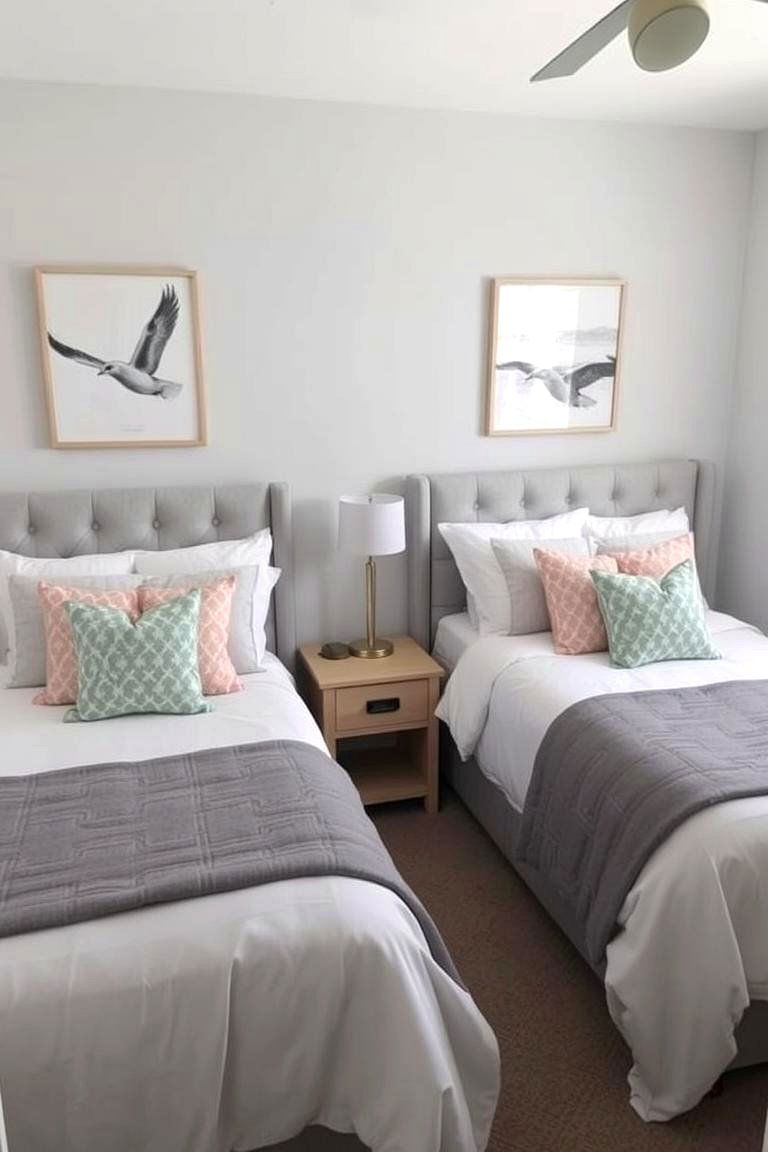
Another way to create a harmonious shared space is by using a coordinating color scheme. Choose a base palette that both occupants agree on, and then allow for personal accents through bedding, artwork, and accessories. This creates a cohesive look while still allowing for individual expression and personality within the shared room.
10. Multi-Functional Furniture Pieces
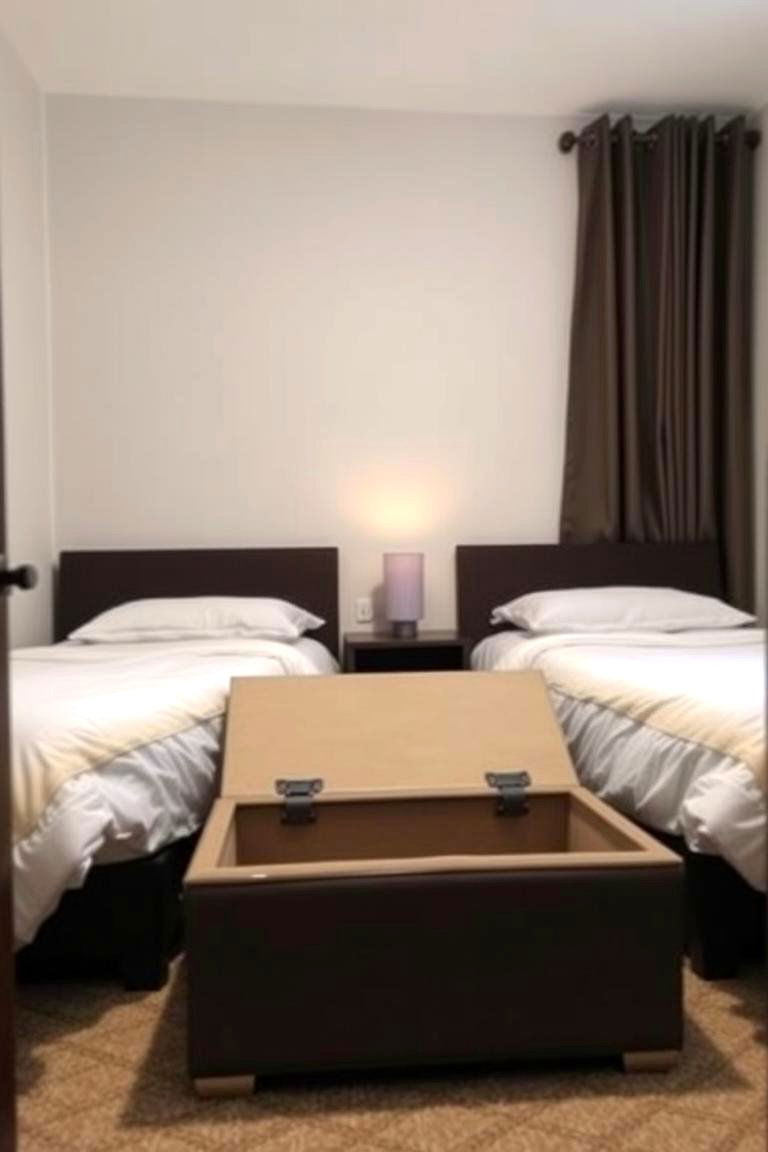
What about furniture that serves more than one purpose? Ottomans with hidden storage, benches that double as toy chests, or desks with built-in drawers are excellent choices for small shared bedrooms. These pieces help to maximize functionality without overcrowding the space, making the room feel more organized and efficient.
11. Vertical Storage Ladders
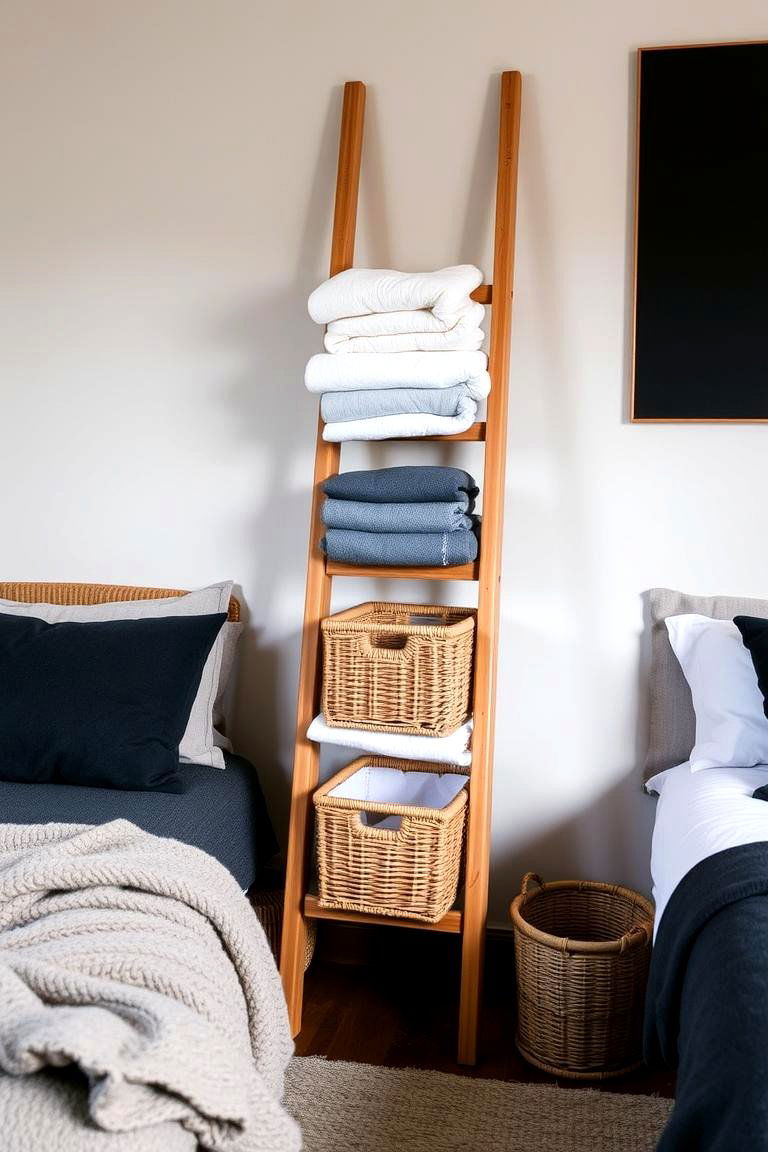
Take your storage solutions to new heights with vertical storage ladders. These can be used to hang blankets, scarves, or even lightweight storage baskets. They add a unique design element to the room while providing practical storage without taking up much floor space. This is a stylish and functional way to keep frequently used items within easy reach.
12. Floating Nightstands
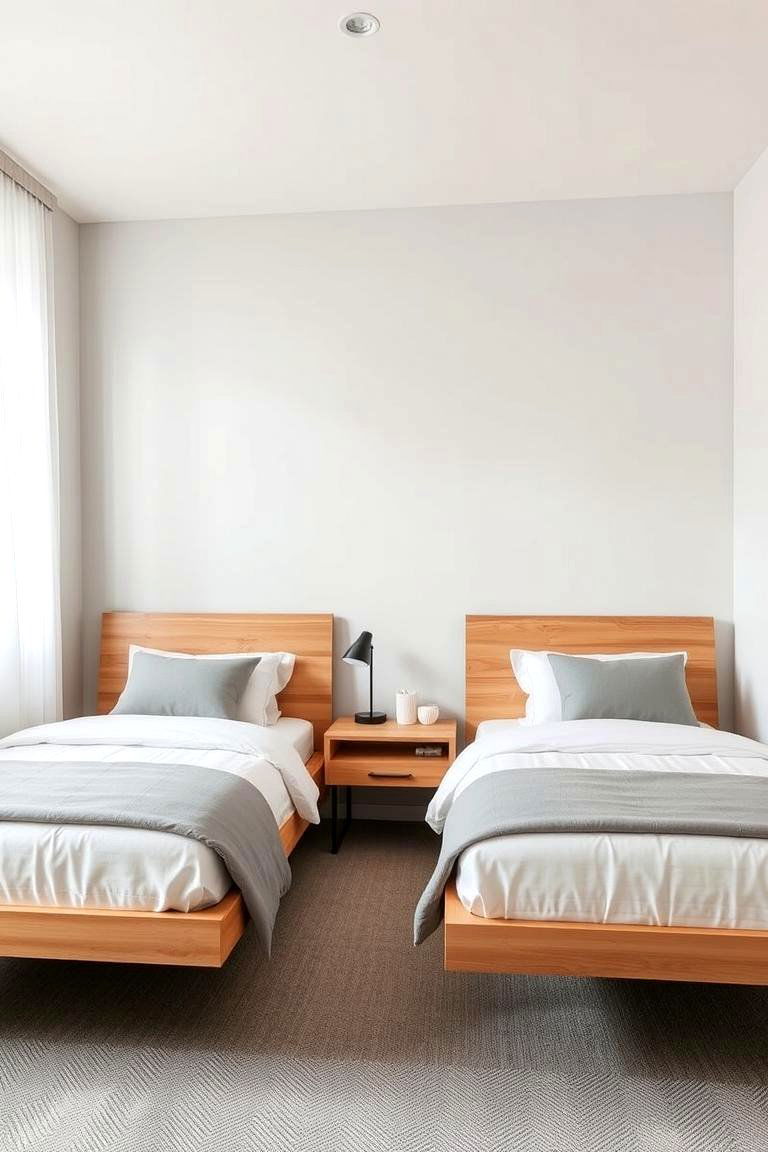
Looking to save space beside the beds? Floating nightstands are a sleek and practical solution. Mounted directly to the wall, they eliminate the need for bulky furniture and free up floor space. They can still provide a surface for a lamp, a book, or a phone, offering convenience without compromising on space.
13. Utilize Corner Spaces
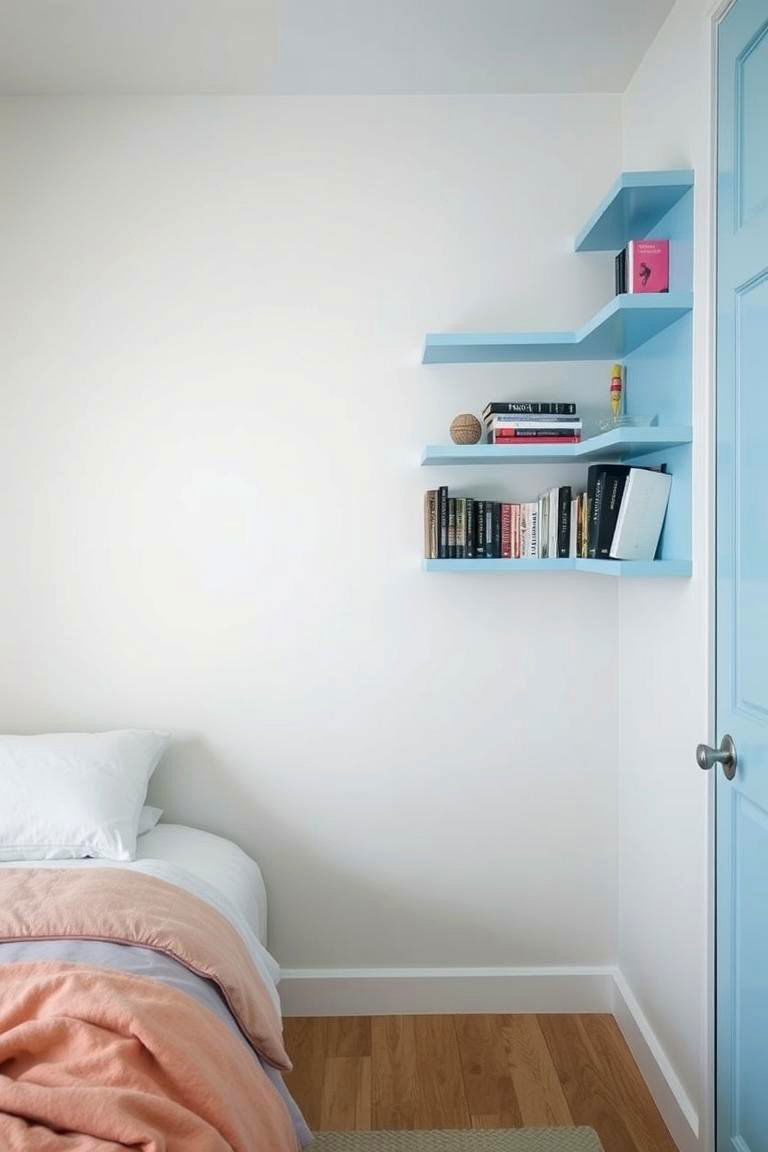
Consider the often-overlooked corner spaces in a room. Corner shelves or corner desks can fit neatly into these areas, providing valuable storage or workspace without obstructing the main flow of the room. This smart use of space can make a significant difference in how functional and spacious a small shared bedroom feels.
14. Matching Bedding with Individual Flair
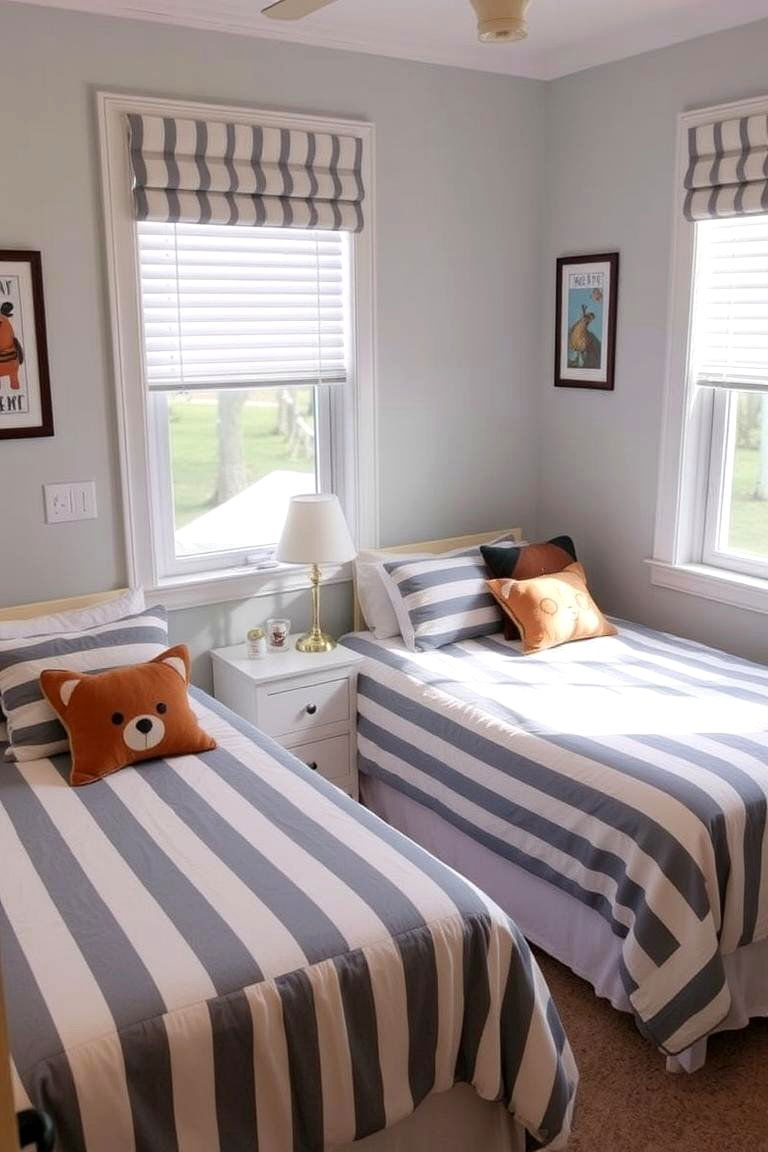
One effective way to create a sense of unity in a shared room is by using matching bedding sets. However, to allow for individual expression, you can incorporate different throw pillows, blankets, or decorative accessories that reflect each person's unique style and preferences. This approach balances cohesion with individuality.
15. Designated Personal Zones
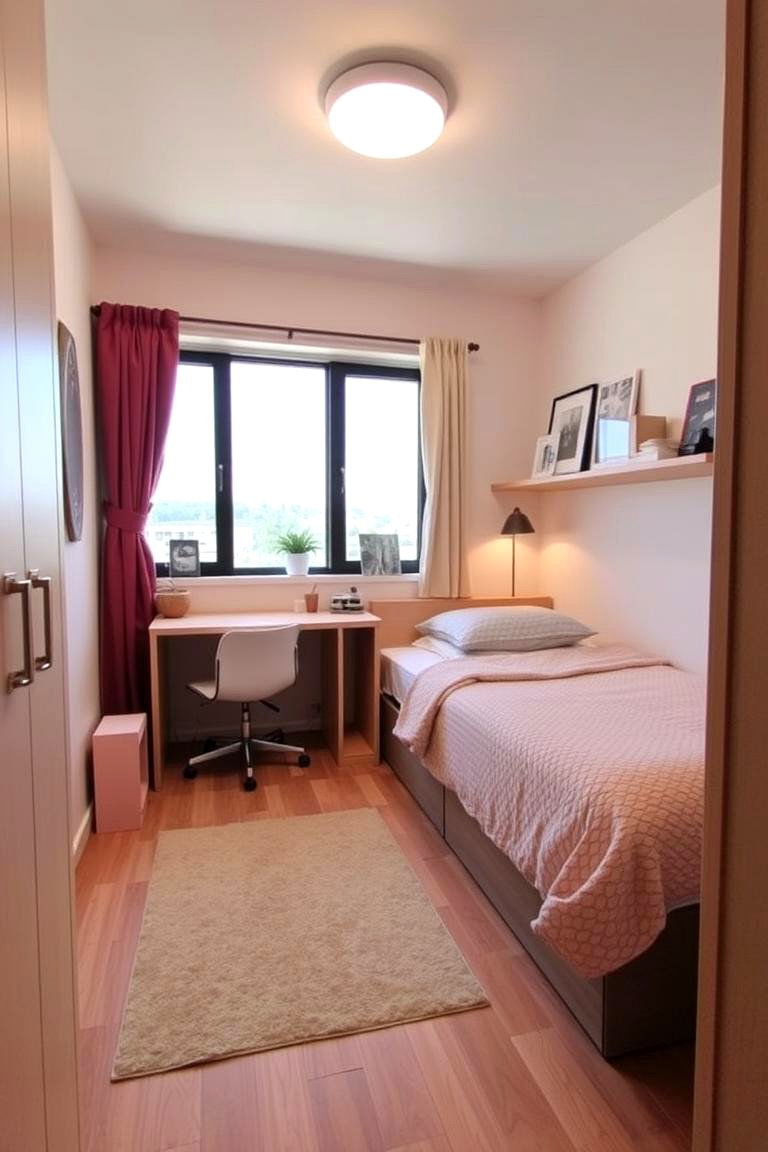
What if you could create invisible boundaries within the room? Designate specific areas for each occupant, even if it's just a corner with their desk or a set of shelves. This helps to establish a sense of ownership and personal space, making the shared room feel more balanced and comfortable for everyone.
16. Creative Headboard Storage
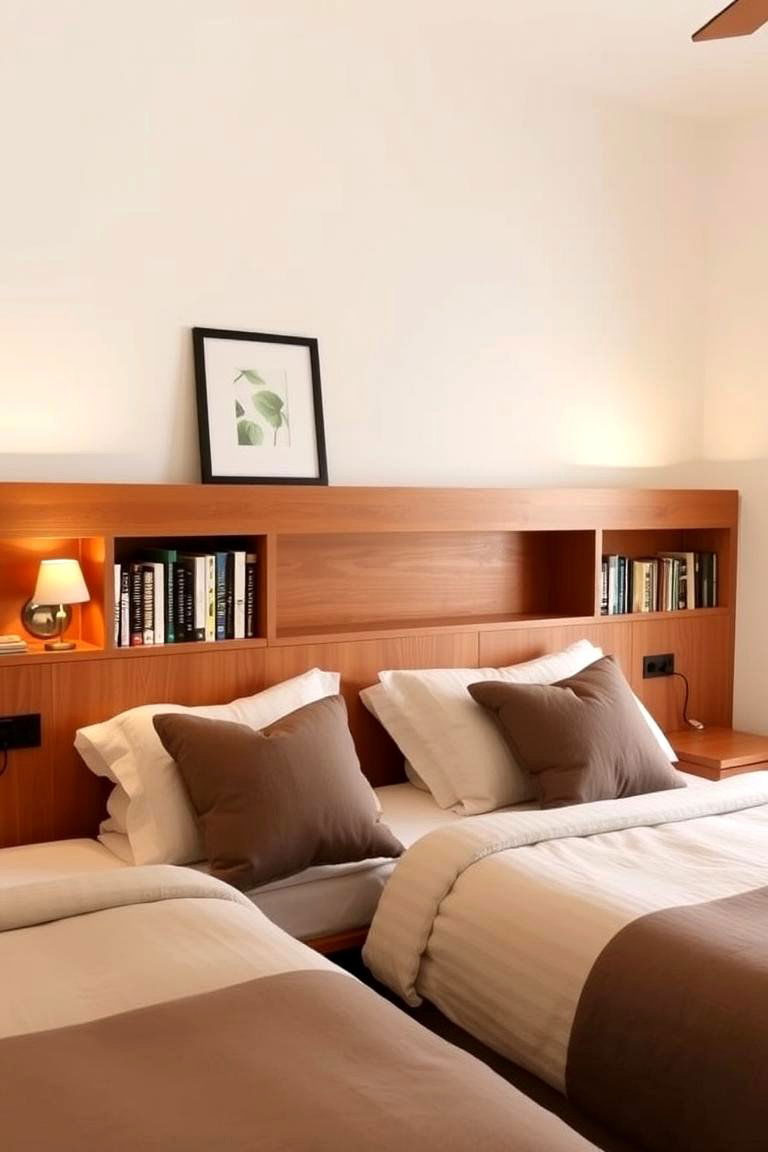
Another often-underutilized area is the space behind the headboard. Consider headboards with built-in shelves or compartments for storing books, alarm clocks, or other nighttime essentials. This clever storage solution keeps clutter off nightstands and maximizes the functionality of the bed area.
17. Light and Airy Window Treatments
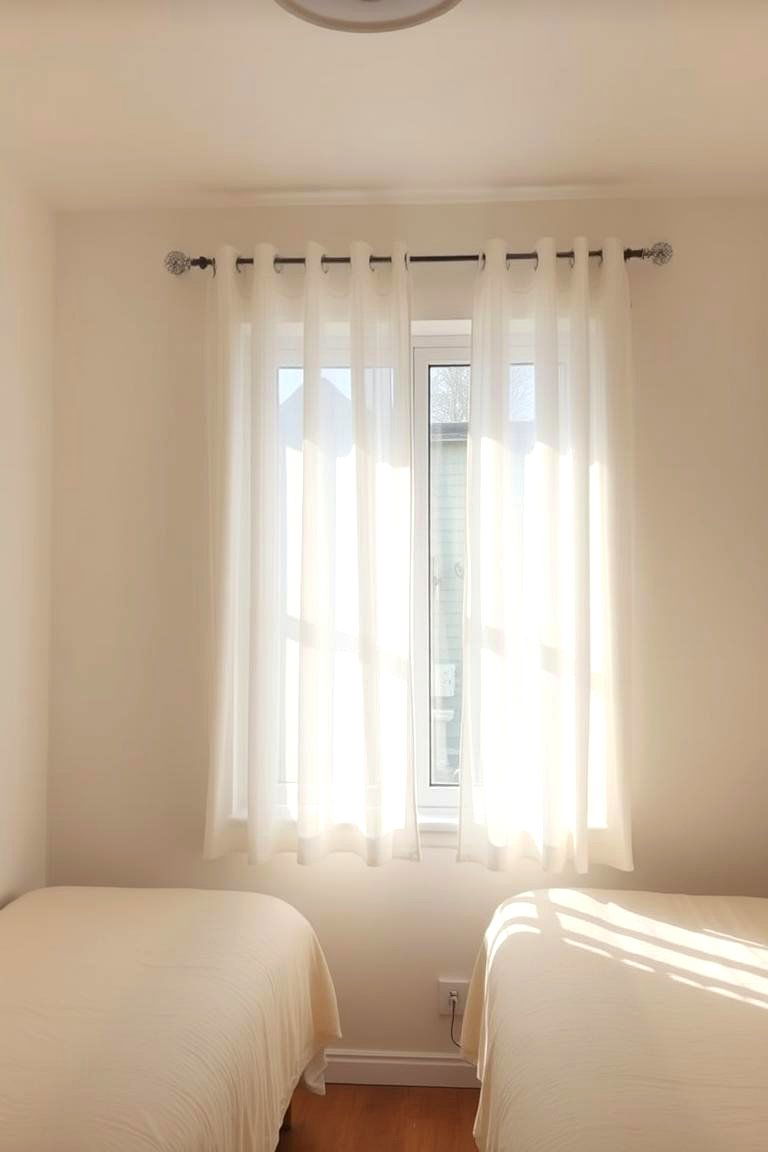
For a small shared bedroom, opt for light and airy window treatments such as sheer curtains or blinds. These allow natural light to filter into the room, making it feel brighter and more spacious. Avoid heavy or dark curtains that can make the room feel smaller and more enclosed.
18. Shared Bulletin Board or Whiteboard

Bringing a collaborative element into the shared space can be fun. A shared bulletin board or whiteboard allows for communication, shared schedules, or even creative expression. This can foster a sense of teamwork and connection between the occupants of the room.
19. Rugs to Define Spaces
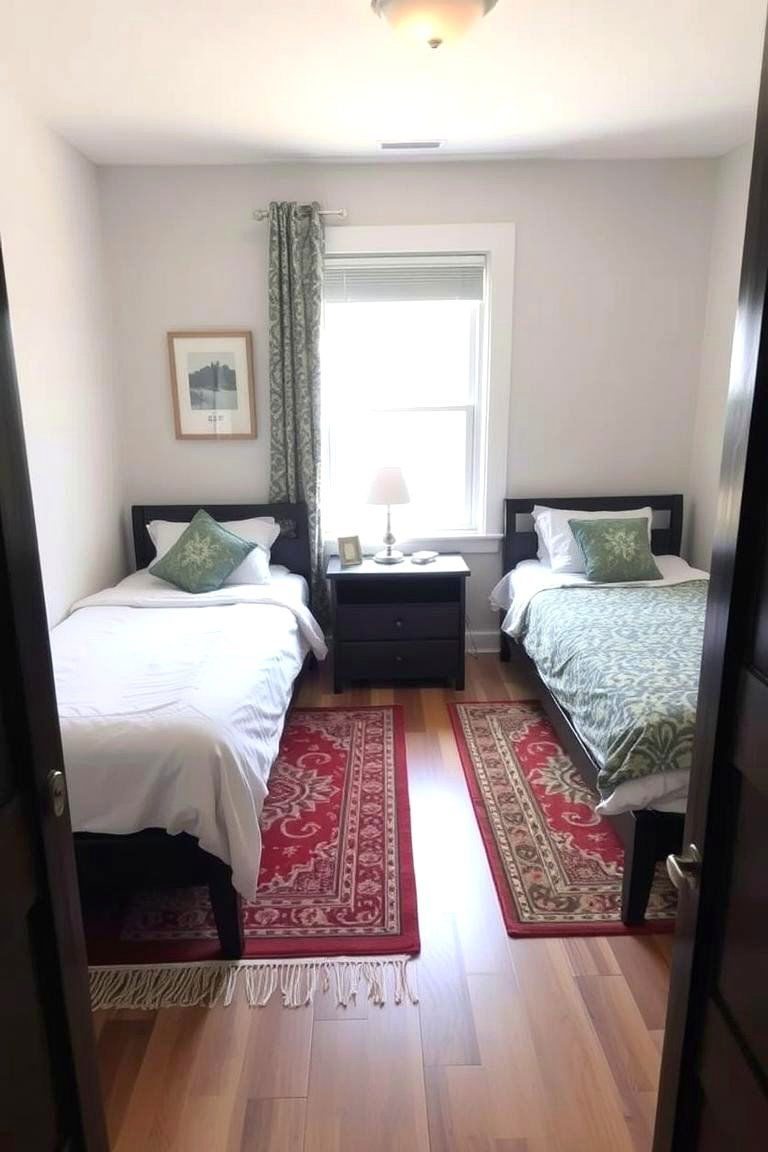
Consider using rugs to visually define individual sleeping or study areas within the shared room. Different colored or patterned rugs can subtly delineate zones without the need for physical barriers, adding a layer of organization and visual interest to the space.
20. Vertical Dresser Alternatives
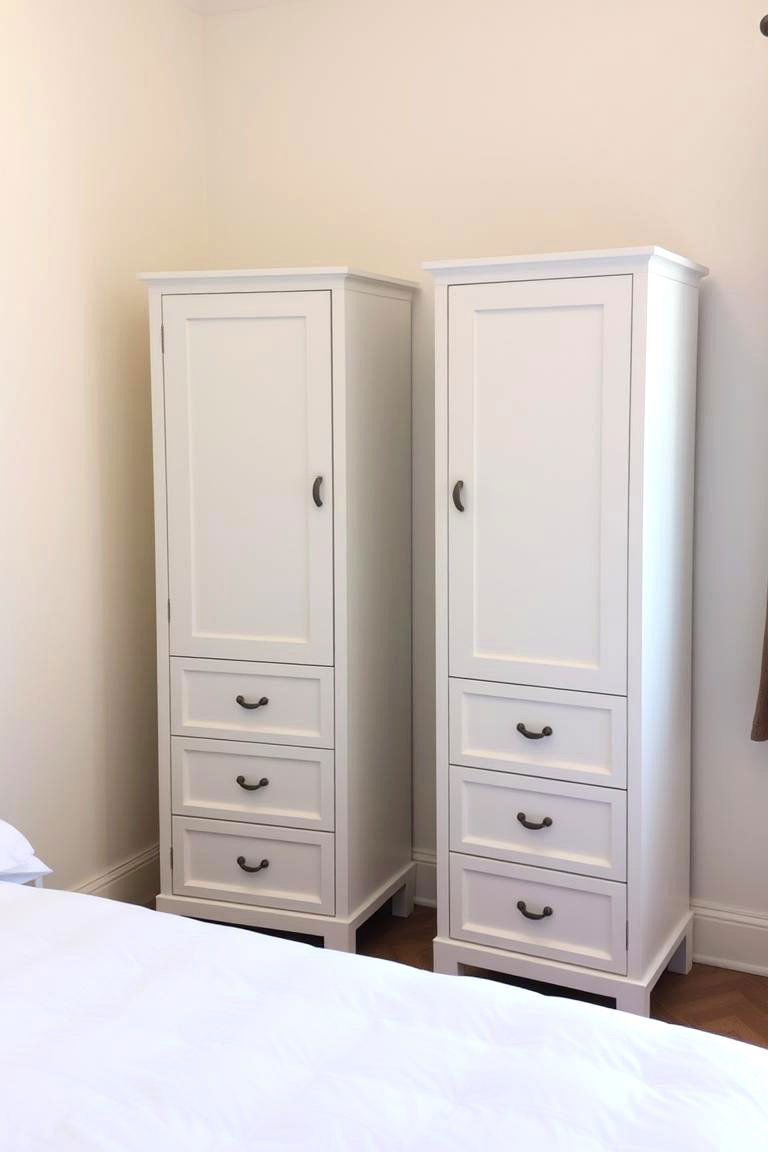
Instead of wide, space-consuming dressers, opt for taller, narrower vertical dresser alternatives. These provide ample drawer space while taking up less floor area. This is a practical way to store clothing and other items without making the room feel cramped.
21. Over-the-Door Organizers
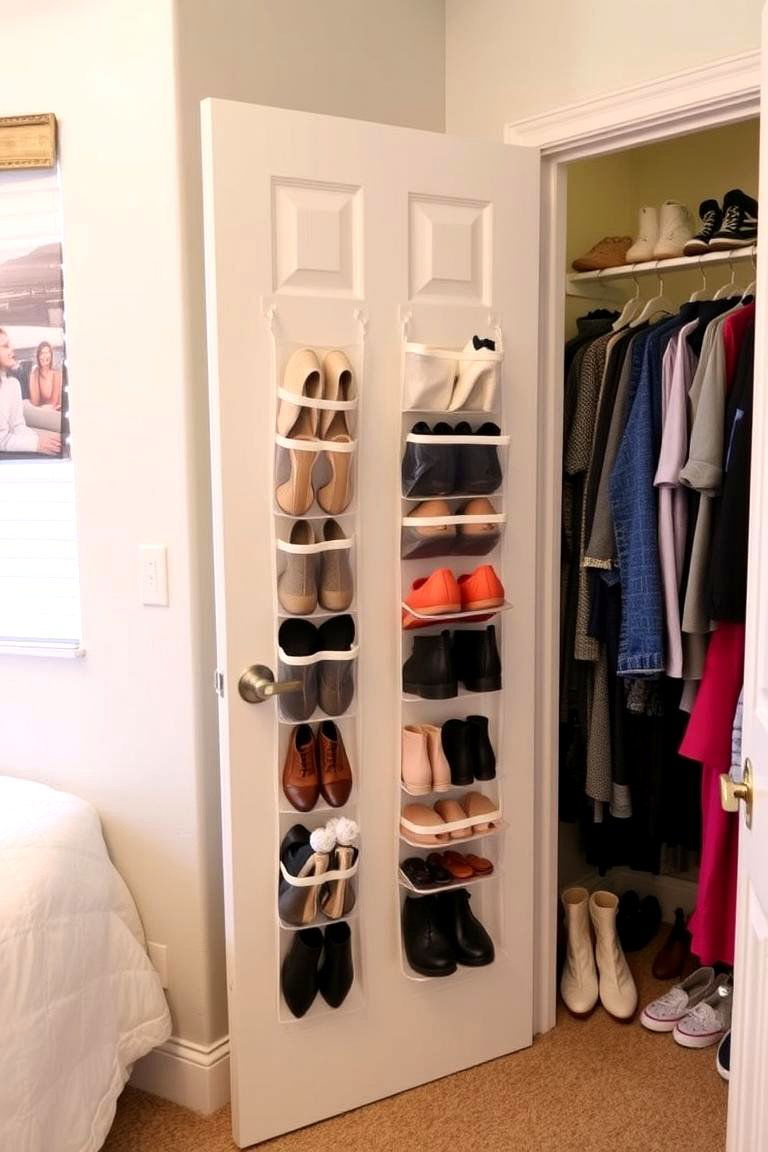
Take advantage of the often-neglected space on the back of doors. Over-the-door organizers with pockets or hooks can be used to store shoes, accessories, or even small toys. This is a simple yet effective way to keep items off the floor and maximize storage in a small room.
22. Rotating Storage Units
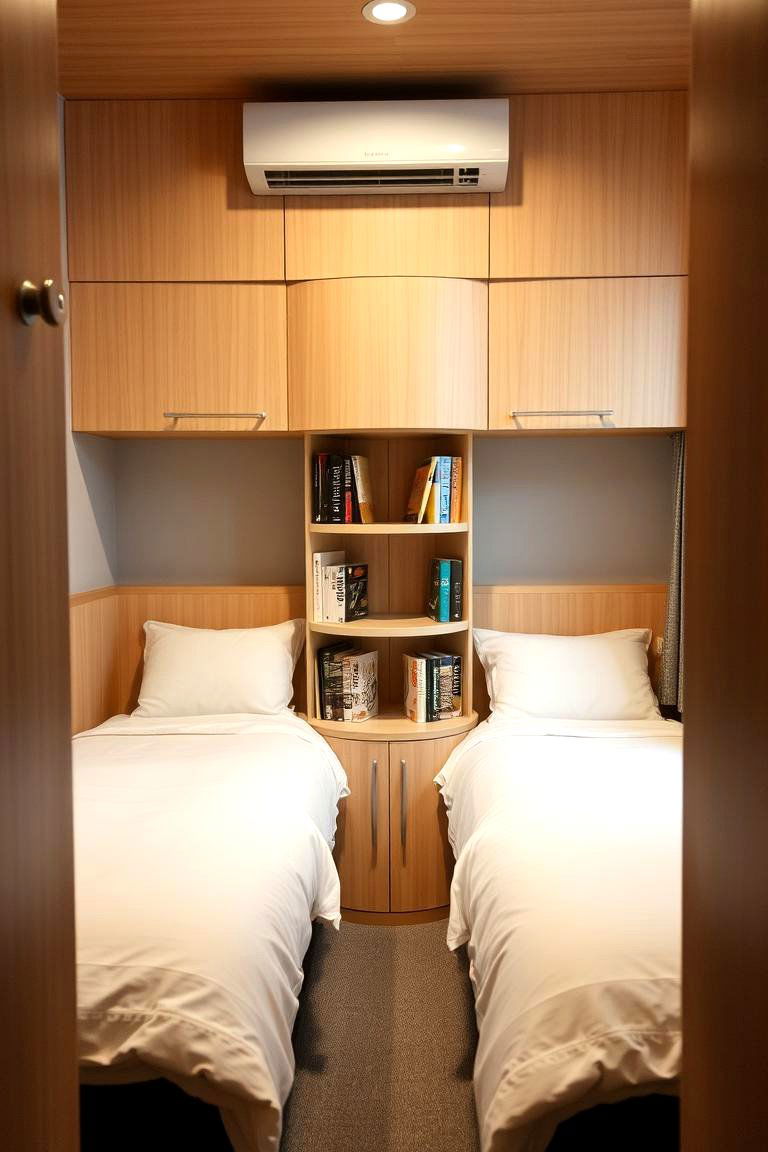
What about a storage solution that offers easy access from both sides of the room? Rotating storage units, such as a rotating bookshelf or a multi-sided organizer, can be placed in the center or along a wall, providing shared storage that is accessible to both occupants.
23. Personalized Lighting Solutions
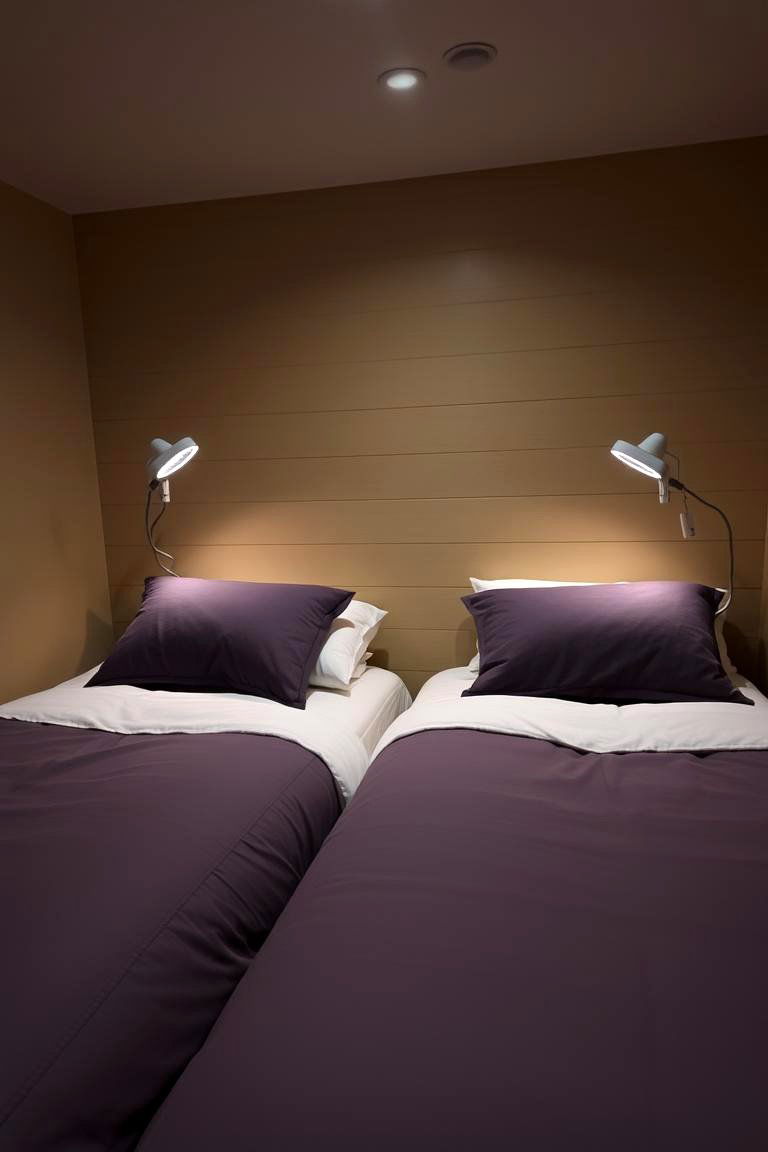
Ensure each occupant has their own dedicated lighting source, such as a bedside lamp or a clip-on reading light. This allows for individual control over lighting levels and caters to different needs, whether it's for reading, studying, or simply relaxing without disturbing the other person.
24. Regular Decluttering Habits
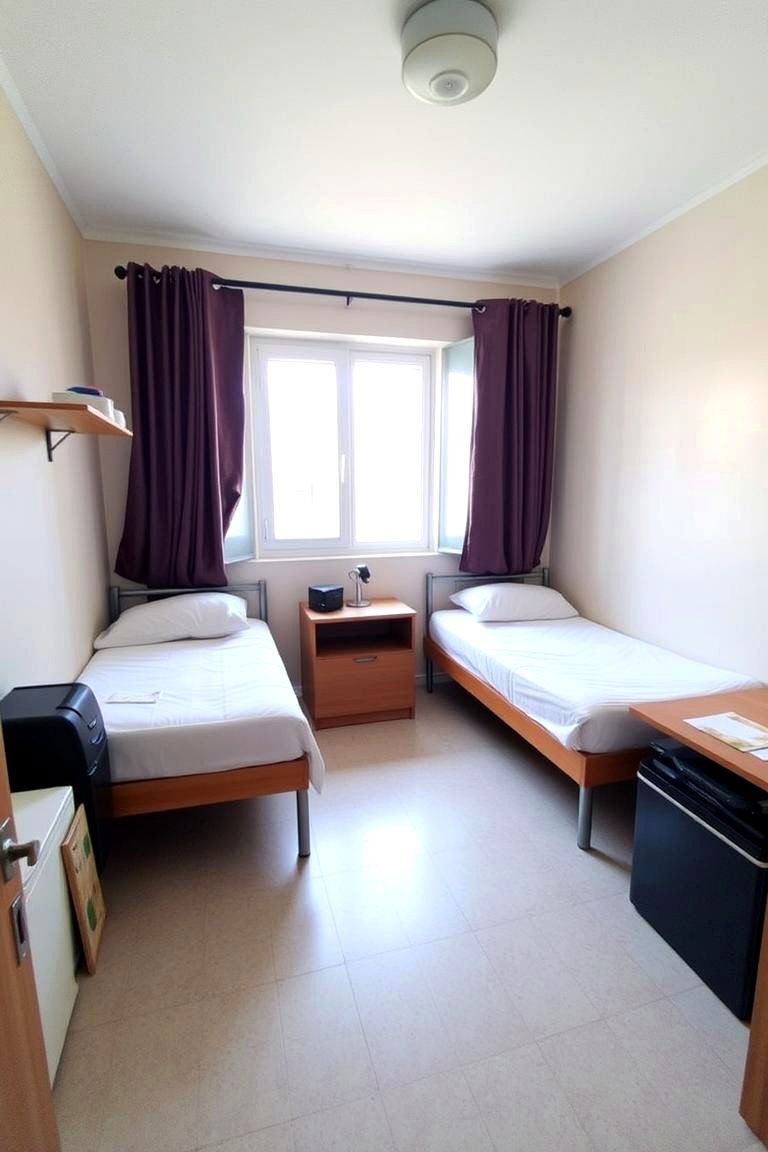
Finally, the most crucial tip for a harmonious small shared bedroom is to establish regular decluttering habits. Encourage both occupants to regularly go through their belongings and remove anything they no longer need. This helps to keep the space tidy and prevents clutter from overwhelming the small room.
In a world where space is often a premium, the concept of shared bedrooms, especially in smaller homes, becomes a testament to creativity and efficient design. The key lies in understanding the needs of each occupant and then implementing strategies that maximize every square inch while fostering a sense of individual space and comfort. By thoughtfully considering elements like furniture selection, storage solutions, and even the psychological impact of visual dividers, it's entirely possible to transform a potentially cramped environment into a functional and enjoyable shared haven. As you consider the possibilities for your own space, remember that the goal is to create a room that not only serves its practical purpose but also promotes harmony and well-being for everyone who shares it. Explore these 24 shared bedroom ideas for small rooms and discover the perfect solutions to optimize your living space.
Conclusion:
Creating a successful shared bedroom in a small space is indeed achievable with thoughtful planning and the right strategies. From the space-saving ingenuity of bunk and loft beds to the subtle yet effective use of dividers and multi-functional furniture, the ideas presented offer a range of practical solutions to maximize every inch. The emphasis on vertical storage, personalized zones, and regular decluttering underscores the importance of both functionality and individual comfort. By implementing these tips, you can transform a potentially challenging space into a harmonious and well-organized shared bedroom that caters to the needs and preferences of all its occupants, proving that even the smallest rooms can be both stylish and incredibly livable.


